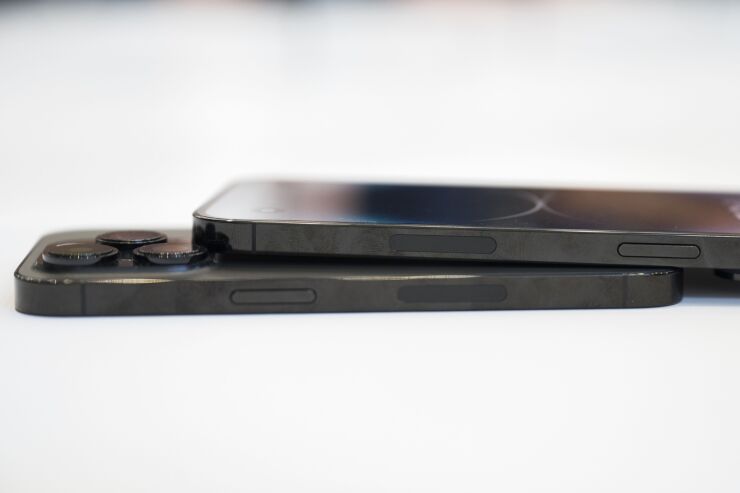Apple's built-in payment method that allows iPhones to serve as point-of-sale hardware — without any dongles or other add-ons — is just hitting the market, though NewStore's Nancy Darish envisions a future with even less direct engagement for payments.
Apple's Tap to Pay "is a step in that direction," said Darish, vice president of product marketing for NewStore, which offers a cloud platform that supports mobile point-of-sale payments for other merchants. "It's getting consumers more comfortable with contactless technology in a cashless world."
Apple now allows its handsets' built-in Near Field Communication hardware to be used to accept payments without any kind of plug-in or Bluetooth card reader attached. However, Apple does not act as a merchant acquirer or payment facilitator; retailers would still need to work with a partner such as NewStore to accept payments.
NewStore last week made iPhone Tap to Pay available to retailers that use Adyen as their processor, including stores such as Outdoor Voices, Ganni and Vince at launch. Adyen is the payment facilitator, and Newstore works with Adyen to offer Tap to Pay to retailers.
Tap to Pay is a relatively new product, though it's developing in tandem with checkout-free systems that are mostly used in parts of supermarkets and convenience stores. Those systems have consumers "check in" through a mobile app or other method before they begin shopping, then let them take items from stores without any further interaction, receiving a receipt after they leave.

Both options are mostly confined to early adopters, but are part of a trend that is taking payments away from dedicated terminals and closer to consumers while they are shopping and considering a purchase. And by eliminating checkout lanes, retailers can repurpose that space for other uses.
"We're moving toward 'experience retail' or a store that is more of a journey," Darish said. "Like at a sporting goods store where you can climb a rock wall and also buy equipment to do that without the purchase being a distinct step."
NewStore hopes to remove a key step in checkout. Store employees needed to carry a wireless credit card reader in addition to an iPhone to complete a payment under NewStore's existing workflow. The readers are prone to battery issues and WiFi connection problems, which cuts into the shopping experience, according to Darish. Tap to Pay in effect makes the wireless card reader unnecessary.
"We see it as reducing processing time by as much as 10 seconds. That doesn't sound like a lot, but it can add up over hundreds of transactions per day," Darish said. "The staff will be able to do more and sell more."
Darish is also monitoring the progress of other technology that reduces the need for physical checkout. Amazon Go is one of the better known options for checkout-free retail, and many other companies have worked to duplicate — or improve on — this concept in recent years.
Firms like Amazon Go and Zippin are focusing more on data their systems collect that isn't captured by traditional point-of-sale systems. This information can play a key role in loyalty programs or back-office tasks such as tracking inventory.
These systems can also generate data such as identifying which products consumers picked up and then put down before selecting another item to purchase. The technology can also track how long a customer spent in the store altogether.
Checkout-free technology
Both smartphone and checkout-free payments could provide ways for merchants to mitigate the expense of payment terminals.
The market for fixed and mobile point-of-sale terminals is valued at $14 billion, and is expanding at a compound annual growth rate of more than 6%, according to a
"Self checkout is moving more toward smart checkout," said Dayna Ford, a senior director at Gartner who focuses on payments within the context of digital commerce.
Increasingly, merchants have options other than a dedicated payment terminal and can instead use personal computing devices that also support incentive marketing, staff and inventory management.
"If you're buying a pair of pants or shoes, you can talk to someone, or look at images and enter that all at once, rather than going to a register or looking at a separate device," Darish said. One of NewStore's clients, the clothing retailer Outdoor Voices, used such a system at a pop-up store during a pilot in August, she added.
There are challenges to smartphone payment, such as concerns over how staff will use their own devices, according to Ford.
"But Tap to Pay is secure and is cheaper than outfitting staff with devices," Ford said. "It would really make sense in a case where I own my own business and I'm the manager and the cashier. I don't need a separate terminal for payments and a device for me to run the business."





